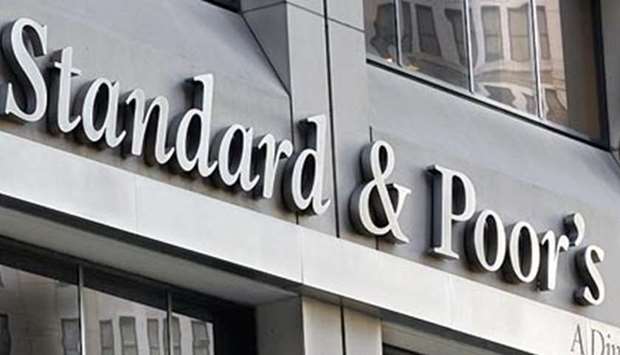*The rating agency expects the government's infrastructure plan to underpin economic activity in Qatar
S&P has affirmed Qatar’s long- and short-term ratings on Qatar at 'AA-/A-1+', even as the rating agency expects the government's infrastructure plan to underpin economic activity in the country.
The ratings affirmation, S&P said, reflects its expectation that the authorities will continue to actively manage the downside impact of the blockade while preserving Qatar's core rating strengths, including strong public finances.
It expects that the high level of government assets will remain a core strength of Qatar's rating.
In an update the global rating agency said Qatari government has taken measures to support confidence in
Qatar's banking system, including the repatriation into the domestic banking system of $43bn (26% of GDP) in public sector--mostly Qatar Investment Authority (QIA)--assets, previously held abroad.
“We expect further nonresident deposit outflows to be gradual, limiting the likelihood that substantial additional support from the government to the banks would be needed. “Finally, we have improved our current account balance forecast based on data through the third quarter of 2017 and the modest increase in our oil price assumptions to $60 a barrel in 2018, up from $55/b earlier,” S&P said.
S&P expects Qatar's liquid external assets to continue to offset the country's stock of debt by a sizeable margin. However, Qatar's gross external financing needs remain sizable, owing to the share of short-term external funding of Qatar's large banking system.
S&P expects the authorities to continue with key macroeconomic policies of fiscal consolidation and the economic-growth-enhancing $200bn infrastructure development plan for 2014-2020 (16% of GDP on average over the period).
Qatari authorities' policy response to falling oil prices since 2015 has been relatively strong and included reigning in current expenditures, merging line ministries, and implementing numerous cost-saving initiatives within its core government-related entities.
In comparison with regional peers, fiscal deficits have been modest as a result, and their financing strategy clear.
Supporting the ratings, S&P noted, “Qatar holds the third-largest proven natural gas reserves in the world, and is the largest exporter of liquid natural gas. We expect Qatar's reserves to provide many decades of production at the current levels.”
The hydrocarbon sector contributes about 50% of Qatar's GDP, 75% of government revenues (oil and gas taxes and royalties, plus dividends from Qatar Petroleum), and 85% of
exports.
Most recent national accounts data, only available in real terms broken down by economic activity and not expenditure, shows that the economy grew by 1.9% in the third quarter of 2017, following the imposition of the boycott, S&P said.
The rating agency now expects real GDP growth of about 3% over 2018-2021.
It expects the government's infrastructure programme to support economic growth, in addition to investment related to a new petrochemicals refinery.
S&P, however, did not include the last year’s lifting of the moratorium on Qatar's North Field in its projections because it expected the potential related revenues, for the most part, to fall outside of its rating horizon through 2021.
The government expects Qatar's gas production to increase by 10% by 2022.
The government has also announced measures to help boost growth in the tourism sector and support the labour supply, including a visa-free entry programme for 80 nationalities.


